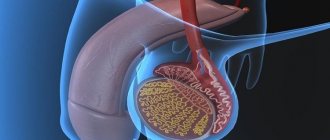One of the most important indicators of the general condition of the body is blood pressure. Its boundaries have long been specified; indicators of 120/80 are considered normal.
But this is not an ideal at all; doctors have another definition; for them, the optimal pressure is that at which a person feels healthy.
And here the range of numbers is completely different - 100-140/60-90. All other indicators, no matter which way they go - down or up, are considered a deviation from the norm, a characteristic sign of hypertension or hypotension.
The difference between systolic pressure (first number) and diastolic pressure (second number) should ideally be 50-60 units. If this interval is more or less than specified, the person does not feel too good. During any surgical interventions, even the most minor ones, doctors always pay great attention to the patient’s blood pressure.
Often you even have to wait out an unfavorable period in the patient’s condition. When you have low (high) blood pressure and surgery cannot be avoided, you should take this extremely seriously. You will need to carefully follow all doctor's orders to eliminate signs of hypertension and hypotension.
What are the dangers of surgery for low blood pressure?
Everyone knows that hypertension is very life-threatening. But low blood pressure is also associated with a certain amount of risk, especially when it comes to surgical interventions. If the patient has hypotension during the operation and for some time after it, death is possible.
These fears are supported by statistical data. Thus, over 252 thousand patients in need of surgical operations were under the supervision of doctors for a long time.
The determining factors during the examination of the patient were:
- health problems;
- floor;
- nationality;
- taking medications;
- objective risks during and after surgery;
- patient pressure.
It turned out that patients with low systolic pressure (less than 100 mm H.S.) were 40% more likely to die on the operating table or immediately after surgery. The situation was even worse for those whose lower indicator was less than 40 mm.r.s. – their risk of death increased two and a half times.
The presented statistical data allowed us to conclude that the attention of surgeons preparing patients with low blood pressure for operations cannot be called sufficient. The number of deaths convincingly proves this.
Now the question of whether it is possible to perform surgery for hypotension should be answered this way - with indicators close to critical (less than 100/below 40), this is extremely dangerous.
But a clear verdict has not yet been made.
Scientists have yet to find out whether taking medications that increase blood pressure will be an effective means for successful operations and a stable rehabilitation period.
Patients with hypotension are automatically at risk during surgical interventions, and after surgery, they should not only be aware of this, but also take measures to bring their condition back to normal.
Recommendations for patients after surgery
Inpatient rehabilitation phase During the first hours after surgery,
you will wake up in the intensive care unit.
The anesthesiologist and nurse will monitor your body temperature, pulse, blood pressure and other indicators. During surgery, you may have a catheter inserted into your bladder to monitor the amount of urine you produce. You will also have a chest tube connected to a drainage device. During the first hours/days after surgery, your voice may be slightly different from normal, this is normal. You may remain in the recovery room for one or several days, depending on your condition after surgery. Then you will be transferred to the ward in the surgical department where you were originally located. Frequently Asked Questions Will I experience pain after surgery?
You will experience pain after surgery, this is normal.
Your doctor and nurse will ask you frequently about your pain and give you pain medications as needed. If the pain does not go away, tell your doctor or nurse. Pain relief is essential so that you can clear your throat, breathe deeply, and get out of bed and walk. Remember that taking painkillers can lead to constipation (retention of stool for more than 2-3 days). If constipation occurs, consult your doctor. Upon discharge, your doctor will give you recommendations on taking pain medications. What is pleural drainage and why do I need it?
A chest tube is a flexible tube that drains blood, fluid, and air that accumulates in the chest cavity after surgery. This tube is placed between the ribs in the space between the chest and lungs (see Figure 1).
Picture 1
Chest drainage and pleural banking.
The timing of drainage of the pleural cavity is individual for each patient.
Removal of pleural drainage is carried out by the attending physician if 2 conditions are met: 1) the amount of fluid released does not exceed 200 ml/day 2) there is no air flow through the drainage . Why is it important to walk after surgery?
Walking helps prevent blood clots from forming in the legs.
It also reduces the risk of other complications, such as pneumonia. During your postoperative hospital stay, try to set yourself a goal of walking 1.5-2 km daily. Will I be able to eat after surgery?
You will gradually return to your normal diet when you are ready.
Your healthcare provider will provide you with more information. Can I shower?
You can shower 48 hours after your chest tube is removed.
A warm shower is relaxing and helps reduce muscle pain. Try to avoid contact of the wound with water until it is completely healed. If you do get the bandage wet, contact your doctor to change the bandage. When can visitors come to me?
Visitors can visit you as soon as you are transferred from the intensive care unit to the surgical unit.
You can find out the hours during which visits are allowed from your attending physician at the department. When will I be discharged from the hospital?
The length of your hospital stay depends on many factors, such as the type of surgery you had and how well your recovery was. You will remain in the hospital until your doctor thinks you are ready to go home. Your doctor will tell you what day and time you can expect to be discharged. Your doctor will tell you if you need to stay in the hospital longer than planned. The following are examples of reasons why you may need to stay in the hospital for a longer time:
- prolonged release of air through pleural drainage;
- problems with healing of postoperative wounds;
- breathing problems;
- increase in temperature in the postoperative period (38.0 °C) and higher.
Recovery after returning home Will I feel pain when I return home?
The duration of the presence of pain and discomfort in the area of surgical access is different for each person and depends on a large number of factors.
Thus, pain after open operations will be stronger and longer lasting than after video-assisted thoracoscopic and robotic operations. For some people, pain in the area of the surgical wound or a feeling of tightness or aching muscles may continue for 6 months or longer. This doesn't mean there's anything wrong with you. Follow the guidelines below. Take pain medications as directed by your doctor and as needed. Call your doctor if the prescribed medicine does not relieve your pain. Do not drive or drink alcohol if you are taking prescription pain medication. As your surgical wounds heal, the pain will become less painful and you will need less pain medication. To relieve pain and discomfort, mild painkillers and non-steroidal anti-inflammatory drugs are suitable: ketanov, ibuprofen (Nurofen-express), Nise (imisulide), xefocam (lornaxicam), diclofenac, as well as other drugs in this group. Pain medications should help you as you return to your normal routine. Take enough medication so that you can exercise comfortably. Remember that it is normal for a slight increase in pain as your activity level increases. Keep track of when you take pain medications. Pain medications are most effective 30 to 45 minutes after you take them. It is better to take the medicine at the first appearance of pain and not wait for it to intensify. How should I care for surgical wounds?
After surgery, you will have several incisions. The location of the incisions will depend on the type of surgery performed. They will be performed at the site of the operation and at the site of the chest tube. You may experience some numbness below and above the incision, as well as along the intercostal space where the incision was made. You may also experience tingling and tenderness in the area around your incisions as they heal. By the time you leave the hospital, your surgical wounds will begin to heal.
Change the wound dressing daily and clean the wound with skin antiseptic/diamond green/betadine (check with your healthcare provider for instructions on how to care for surgical wounds).
Upon discharge, your attending physician will give recommendations on when to remove sutures from post-operative wounds. To do this, you will need to contact a surgeon at the clinic at your place of residence.
If, after discharge from the hospital, discharge appears in your postoperative wounds, contact your doctor.
What should I eat at home?
Eating a balanced, high-protein diet will help you recover faster after surgery.
Your diet should include a source of healthy protein at every meal, as well as fruits, vegetables and whole grains. How can I prevent constipation?
After surgery, your bowel movements will change.
There may be problems with bowel movements (stool excretion). If you can, drink 8 glasses (250-300 ml each, 2 liters total) of fluid daily. Drink water, juices, soups, milkshakes and other caffeine-free drinks. Caffeinated drinks, such as coffee and soda, remove fluid from the body. Both prescription and over-the-counter medications are used to treat constipation. If constipation occurs, start with 1 of the following over-the-counter medications: Docusate sodium (Norgalax) 100 mg. Take 3 capsules once daily. This remedy softens the stool and causes only minor side effects. Senna 2 tablets before bed. It is a stimulant laxative that may cause cramping. How can I speed up the recovery process?
Exercise for at least 30 minutes a day. This will make you stronger, improve your well-being and promote recovery. Incorporate a daily walk into your daily schedule. Just walking down the street or walking on a gym will do. If the weather is not very suitable for walking, you can spend time in the shopping center. Climbing stairs is also suitable as a workout. When you return home, continue to do deep breathing exercises and exercises that stimulate coughing. Drink fluids so that the mucus is not thick and can be easily coughed up. Ask your doctor how much fluid you should drink daily. For most people, this will be at least 8-10 glasses (250-300 ml) of water or other liquids (such as juices) per day. During the winter months, run a humidifier in your bedroom. Follow the instructions for cleaning this device. Change the water in it frequently. Avoid contact with people who have a sore throat or cold or flu symptoms. All this can cause an infection to develop.
Do not drink alcohol, especially if you are taking pain medication.
Do not smoke.
Smoking cigarettes will always be harmful to your health. It is especially dangerous during the recovery period after surgery. Smoking causes blood vessels to narrow. This reduces the amount of oxygen supplied to wounds during their healing process, which significantly slows down the regeneration process. Remember, if you are not able to quit smoking on your own, you can contact the “Smoking Quit Assistance Center” located on the territory of the St. Petersburg NIIF by contacting them on the hotline (+7). Can I return to normal activities?
It is very important that you return to your normal activities after surgery. Distribute their implementation throughout the day. Walking and climbing stairs are excellent exercise. Gradually increase the distance you walk. Climb the stairs slowly, resting and stopping as needed. Do light housework. To the best of your ability, try to dust, wash dishes, cook simple meals, and do other tasks. When going about your business, use the arm and shoulder on which the operation was performed. For example, wash yourself, comb your hair, take things out of the closet shelf with this hand. This will help restore full function of the arm and shoulder.
You can return to your normal sex life as soon as the post-operative wounds have healed, without experiencing any pain or weakness.
Your body will tell you when you are overtired.
As you increase the intensity of your exercise, monitor your body’s reaction. You may notice that you have more energy in the morning or afternoon. Schedule your activities for the time of day when you feel more energetic. Is it normal to feel tired after surgery?
Typically, a person has less strength than usual after surgery.
Recovery time is different for everyone. Increase your activity every day to the best of your ability. Always maintain a balance between periods of activity and periods of rest. Rest is an important factor in your recovery. It may take some time for you to return to your normal sleep pattern. Try not to sleep during the day. Showering before bed and taking prescribed pain medications will also help. When will I be able to drive?
You will be able to drive again after: the range of motion of the arm and shoulder on which the operation was performed is restored to full extent;
you will not take narcotic pain medications (which make you drowsy) for 24 hours. Can I travel by plane?
Do not fly by plane until your doctor allows it; in the first months after surgery, try to use other means of transport or completely avoid long-distance travel.
When can I return to work?
The time frame for returning to work depends on what type of job you have, what type of surgery you had, and how quickly your body recovers.
If you need a certificate to return to work, contact your doctor. When can I lift weights?
Check with your doctor before lifting weights.
It is generally not recommended to lift anything heavier than a normal grocery bag (5kg) for at least 1 month after surgery. Ask your doctor how long you should avoid lifting heavy objects. This depends on the type of surgery you had. Which doctors should I see after surgery?
Upon discharge from the hospital, your attending physician will give you a discharge summary with further recommendations.
If it is necessary to consult any specialists, this will be indicated in the epicrisis. What questions should you contact your doctor about?
Sometimes in the postoperative period the patient may be bothered by the following conditions:
- shortness of breath appeared or worsened;
- swelling of the chest, neck, or face;
- the voice changed dramatically;
- temperature increased (38.0 °C) or higher;
- the pain has sharply increased and does not go away after taking painkillers;
- redness or swelling appears around the postoperative wound;
- there is discharge from the postoperative wound that has an unpleasant odor, thick consistency or yellow color (similar to pus);
- no bowel movements for 3 days or longer;
- new symptoms or physical changes appear;
And if you have any questions or concerns regarding your health, please contact your healthcare provider.
Full version
© Website of a medical organization
The information posted on the site is not a public offer
- Cabinet
- Personal data
- Coupons
- My services
- Test results
- My requests
- Exit
Low blood pressure after surgery: some nuances
When hypotension is observed, the following processes can occur in the human body:
- hearing loss;
- vision problems;
- memory impairment;
- renal failure;
- loss of consciousness;
- falling into a coma.
Hypotonic people, without any device, only based on monitoring their own well-being, can accurately determine that their blood pressure has become even lower.
As a rule, hypotensive people feel:
- dizziness;
- nausea;
- violations of movement coordination.
And these three symptoms are a reason to immediately consult a doctor. Hypotension often appears after surgery, during the rehabilitation period.
If the patient is already at home, he needs to pay close attention to his lifestyle and diet. The rules are simple and clear, but they must be followed strictly and methodically.
So, let’s bring our own diet back to normal, for this it is enough:
- maintain proper drinking regimen (8-12 glasses of water per day);
- for snacks between meals, eat only vegetables or fruits;
- eat small portions (6-8 times a day);
- increase the amount of fatty foods;
- consume more complex carbohydrates;
- increase the amount of sugar.
Fish, caviar, eggs, fatty meats, and butter are healthy.
It remains to find out which foods contain complex carbohydrates; their list is very impressive; here are the most common and accessible ones:
- Brown rice;
- oatmeal;
- Rye bread;
- potato;
- peas;
- liver;
- beef heart;
- all kinds of nuts;
- greenery;
- beet;
- black currant;
- gooseberry;
- watermelons;
- melons;
- carrot.
Low blood pressure after surgery is not uncommon; proper nutrition will help raise it to normal levels.
Possible consequences of coronary artery bypass surgery
Doctors began performing heart bypass surgery over 50 years ago. Today, technologies have changed, equipment has improved, surgical instruments have been enriched, and the skills of specialists have increased, but complications after CABG on the heart periodically occur. This is not a reason to assume that the risks before performing manipulations are high. Operations carried out in Israel have reached the maximum level of security. However, not everything depends on the operating doctor. Sometimes failures are associated with the individual reactions of the patient’s body, the general state of his health and other third-party factors.
Bleeding after CABG
Bleeding after surgery can occur from a couple of hours to several days. The cause is often not a medical error, but an insufficient rate of blood clotting of the patient due to the use of medications that stimulate blood flow and increased blood pressure. In order to prevent postoperative complications of coronary artery bypass grafting, it is important to follow the recommendations given by your doctor regarding preparation for the procedure and after it.
Thrombosis
The installed veins or arteries are removed by surgeons from the patient's body to create an alternative blood supply to the heart muscle. Typically, material is taken from the lower extremities and forearm. This creates temporary difficulties in restoring blood flow at the site of the removed vessels. When coronary artery bypass surgery is performed, the consequences may manifest themselves in the form of deep vein thrombosis. Negative changes are indicated by pain and swelling of the legs after coronary artery bypass surgery, which occur several days after the intervention. The attentive attitude of doctors will allow us to notice deviations at an early stage and eliminate them without harm to the patient’s health. In many situations, the consequences can be easily prevented if you carry out the specialized administration of drugs that have a beneficial effect on blood flow.
Heart rhythm disturbances
CABG surgery is a complex procedure that requires high skill from the surgeon performing it. The essence of the method is simple. At one end, the shunt expropriated from another area is sutured into the aorta. The second end goes into the coronary vessel under the narrowing point. Despite the highly qualified surgeons, heart rhythm disturbances may occur immediately after surgery or during the post-rehabilitation period. If complications of CABG are expressed in this way, treatment of the condition includes antiarrhythmic drugs, and in severe cases, electrical cardioversion.
Heart attack
The most severe negative consequence is myocardial infarction, which is characteristic of the early period of recovery after surgery. A heart attack can occur in the first few hours or days. You should be alert to severe chest pain after CABG, pressure, burning in the center of the sternum that does not go away after taking medications. Atherosclerosis affects large areas of blood vessels. An integrated approach to treatment and constant monitoring of the patient’s condition after the bypass procedure are not always able to prevent complications. This is explained by the activation of cells that cause the inflammatory process, causing an increase in the ability of blood to clot.
Provoked changes in the vascular network can lead to atherothrombosis. Medical statistics indicate cases when, during CABG, the myocardium does not receive adequate blood supply, which causes a heart attack. It is important to listen to the advice of doctors at the stage of preparation for surgery: eliminate bad habits, give the body proper rest during exercise, accustoming yourself to a regimen. Heart attack after CABG can be prevented by reducing the risk factors that cause it.
Stroke
Observations of the practice of conducting operations contribute to the formation of statistics. In 40%, low blood pressure after CABG and impaired blood supply to the brain lead to the development of a stroke in the first day after surgery. In 60% of complications, a stroke occurs in the first week of the recovery period. It is signaled by numbness of the limbs, difficulties with movements and articulation. The preoperative condition of the patient can also contribute to the development of a negative condition if there is a history of atherosclerosis of the coronary arteries and cerebral vessels.
Narrowing of shunts
When sending a patient for coronary artery bypass surgery, the doctor immediately identifies the risks. Common complications include narrowing of the shunts, atherosclerosis of established vessels, and thrombosis. The condition is observed in the first year after the procedure in 20% of patients; in the rest, the vessels narrow after 7-10 years. This requires repeated surgery to free the blood flow from atherosclerotic plaques clogging the vessels. A lot depends on the patient here. The more carefully the patient adheres to medical recommendations, the longer the surgical result lasts.
Factors influencing the occurrence of complications
If you have undergone CABG surgery, the consequences of the intervention depend on the doctor and the patient. The above is not a complete list of possible complications. It should be noted that the wound is infected, suture failure, mediastinitis, sternal diastasis, pericarditis. Some conditions cause serious danger to life. Arrhythmia after CABG, low or high blood pressure, and pain symptoms should be alarming. Statistics record the death rate after heart surgery within 3%. This is not a big indicator, given the complexity of medical procedures. In medicine, factors that provoke the development of complications are identified. Among them:
- History of angina pectoris, heart attack. Pathology indicates damage to the heart muscle and vascular network before surgery, which cannot contribute to rapid rehabilitation and a problem-free recovery period.
- A significant complication of coronary artery bypass grafting is caused by stem lesions of the left coronary artery and left ventricular dysfunction. This factor is one of the first to be noted by the doctor during examination and referral for surgery.
- Heart failure with a pronounced chronic nature.
- Atherosclerosis of peripheral vessels, arteries.
- According to research, the risk of complications is higher in women.
- Chronic pulmonary diseases.
- Diabetes.
- Kidney failure.
Recovery after surgery
Several days in intensive care after surgical intervention contribute to the patient’s initial recovery. Nagging pain in the sternum after CABG is explained by surgical incisions and suturing. To prevent wound decay and infection, the wound is treated with antiseptics. For some time the patient will experience discomfort and burning, but they will soon pass. After a couple of weeks, with successful rehabilitation, you are allowed to take a shower.
Bones damaged by the intervention take longer to heal – up to 7 weeks. During this period, it is recommended to wear elastic stockings and avoid physical activity, so as not to provoke unwanted complications. Anemia is compensated for by proper nutrition including foods containing iron. It is important to learn to breathe correctly so as not to cause congestion in the lungs. A cough after CABG is considered normal; doctors teach the patient to cough, restoring the ability of the lungs to function independently.
Doctors are not alarmed by leg swelling after CABG, which should go away within 2 weeks. If swelling persists, additional studies, specialized medications and procedures are prescribed. In the future, slight swelling is possible at the site of vein removal, since the network of blood vessels still does not cope well with the outflow of blood. To determine the condition, duplex scanning, lymphography, ultrasound diagnostics, kidney examination, and urine and blood tests are prescribed.
Cardiac rehabilitation will reduce the risk of complications
It is impossible to independently make diagnoses regarding the prohibition or permission of CABG. A referral for surgery will be given by a professional doctor after the patient has undergone a thorough examination and identified the risks of developing negative reactions during the procedure and during the recovery period. The best option possible is to prevent coronary artery disease. If this is not possible, you should carefully follow the recommendations of doctors so that the results of bypass surgery are not impaired by complications that arise.
You need to carefully prepare for the time of surgery. The first conversation with the doctor should be confidential. It is necessary to warn about past illnesses and chronic diseases. Care should be taken in choosing a medical institution where the operation is performed. The Assuta Clinic is famous for its level of emergency care and operations performed as planned. Highly qualified cardiac surgeons, modern equipment, proven techniques for managing severely ill patients are the factors for successful treatment.
Attention should be paid to the postoperative period. After undergoing CABG, you should take medications prescribed by your doctor, attend rehabilitation therapy procedures, and lead a healthy lifestyle. The first days after coronary artery bypass surgery, dizziness, chest pain, and slight swelling are possible. Soon the negative symptoms will pass, and the body will begin to regain strength. After surgery, many patients live fully for a long period of time, exceeding several decades. Therefore, you should not be afraid of the consequences and complications; a professional doctor will do everything possible to reduce the risk of developing pathological reactions.
Hypotension and bad habits of the patient
An unhealthy lifestyle also greatly affects the decrease in blood pressure after surgery.
If you have hypotension, it is recommended to exercise; this always leads to an improvement in your well-being, but a set of physical exercises should be prescribed to you by your attending physician.
You should not make sudden movements, turns, or tilt your head; fast walking and running are contraindicated; all this must be taken into account. Bad habits - drinking alcohol and smoking should be left in the past .
Do not forget that alcohol interacts chemically with many medications and can cause irreparable harm to the body. Alcohol, like caffeine, causes dehydration, which leads to a further decrease in blood pressure.
Stress is one of the main causes of blood pressure problems
Stress and excessive nervousness are also extremely undesirable phenomena with hypotension. Try to treat all negative incidents in your life with a certain amount of complacency and some detachment. This will keep the nervous system calm.
The postoperative period is the most convenient time to give up bad habits that lead to problems with blood pressure and acquire useful ones (master a set of light physical exercises and do them constantly).
Proper rest and relaxation also helps bring low blood pressure back to normal. Sometimes patients want to sleep all the time. There is nothing wrong with this, which means you just need to increase your sleep period. In hypotensive patients it ranges from 10 to 12 hours and this is considered normal.
Postoperative period
Day after surgery: postoperative period - 1 day
The patient may remain in the intensive care unit or be transferred to a special room with telemetry, where his condition will be monitored using special equipment.
Once fluid balance is restored, the Foley catheter is removed from the bladder. Remote cardiac monitoring is used, drug pain relief and antibiotic therapy are continued. The doctor prescribes dietary nutrition and instructs the patient about physical activity (the patient should begin to sit up on the bed and reach for a chair, gradually increasing the number of attempts).
It is recommended to continue wearing support stockings. Nursing staff are wiping down a patient.
Postoperative period - 2 days
On the second day after surgery, oxygen support is stopped, and breathing exercises continue. The drainage tubes are removed from the chest. The patient's condition is improving, but parameters continue to be monitored using telemetry equipment.
The patient's weight is recorded and the administration of solutions and medications continues. If necessary, the patient continues pain relief, and also follows all the doctor’s prescriptions. The patient continues to receive dietary nutrition and his activity level gradually increases. He is allowed to get up carefully and, with the help of an assistant, move to the bathroom. It is recommended to continue wearing support stockings, and even begin to perform simple physical exercises for the arms and legs.
The patient is advised to take short walks along the corridor. The staff constantly conducts explanatory conversations with the patient about risk factors, instructs how to handle the suture, and talks with the patient about the necessary measures that prepare the patient for discharge.
Postoperative period - 3 days
Monitoring of the patient's condition stops. Weight recording continues. If necessary, continue pain relief. Follow all doctor's orders and breathing exercises. The patient is already allowed to take a shower and increase the number of movements from bed to chair up to 4 times, this time without assistance.
It is also recommended to increase the duration of walks along the corridor and do this several times, remembering to wear special support stockings. The patient continues to receive all the necessary information about dietary nutrition, taking medications, home exercise, full restoration of vital activity and preparation for discharge.
Postoperative period - 4 days
The patient continues to perform breathing exercises several times a day. The patient's weight is checked again. Dietary nutrition is still carried out (restriction of fatty, salty foods), but the food becomes more varied and the portions become larger. You are allowed to use the bathroom and move around without assistance. Assess the patient's physical condition and provide final instructions before discharge. If the patient has any problems or questions, he must resolve them before discharge.
Shortly after surgery, the bandage will be removed from the incision on your chest. The air will promote drying and healing of the postoperative wound. The number and length of incisions in the legs may vary from patient to patient, depending on how many vein grafts were planned to be performed. Some will have incisions on only one leg, some on both, and some may have an incision on their arm. First, the seams will be washed with antiseptic solutions and dressings will be made. Somewhere on the 8-9th day, with successful healing, the sutures will be removed, and the safety electrode will also be removed.
Later, you can gently wash the incision area with soap and water. The patient may have a tendency for the ankles to swell or feel a burning sensation in the area where the veins were taken. This burning sensation will be felt when standing for a long time or at night. Gradually, with the restoration of blood circulation at the sites where the veins are taken, these symptoms will disappear.
The patient will be asked to wear elastic support stockings or bandages, this will improve circulation in the legs and reduce swelling. However, we should not forget that full fusion of the sternum will be achieved in a few months, so you will need to discuss with your doctor the timing of adequate load on the shoulder girdle.
Typically, after bypass surgery, patients spend 14-16 days in the clinic. But the length of stay of a particular patient may vary. As a rule, this is associated with the prevention of concomitant diseases, since this operation will require the patient to spend a lot of effort on the whole body - this can provoke an exacerbation of chronic diseases. There will be a gradual improvement in your general condition and a surge of strength.
Quite often, patients feel fear and confusion upon discharge. Sometimes this is because they are afraid to leave the hospital where they felt safe under the care of experienced doctors. They think that returning home is risky for them. But the patient must remember that the doctor will not discharge him from the clinic until he is sure that his condition has stabilized and that further recovery should take place at home.
A nurse or social worker will help resolve any issues related to discharge. Typically, discharge from the hospital occurs around noon.
AFTER OPERATION
From the above, it follows that CABG surgery is the main step towards returning the patient to normal life. CABG surgery is aimed at treating coronary artery diseases and relieving the patient of pain. However, it cannot completely rid the patient of atherosclerosis.
The most important goal of the operation is to change the patient’s life and improve his condition by minimizing the effect of atherosclerosis on the coronary vessels.
As is known, many factors directly influence the formation of atherosclerotic plaques. And the cause of atherosclerotic changes in the coronary arteries is a combination of several risk factors. Gender, age, heredity are predisposing factors that cannot be changed, but other factors can be changed, controlled and even prevented:
- High blood pressure.
- Smoking.
- High cholesterol levels.
- Overweight.
- Diabetes.
- Low physical activity.
- Stress.
With the help of doctors, you can assess your health and try to start getting rid of bad habits, gradually moving towards a healthy lifestyle.
← Back
What are the reasons for hypotension during and after surgery?
Most patients who had normal blood pressure before surgery are extremely surprised that after surgery their usual levels decrease significantly.
Meanwhile, doctors are well aware of what causes this problem.
Most often, hypotension after surgery is temporary, and its occurrence depends on many reasons, which include hypovolemic, cardiogenic, septic shock, or a reaction to pain relief. Any operation, even the simplest and shortest, is a difficult test for our body.
When it comes to complex and urgent interventions, for example, with injuries, the patient experiences hypovolemic shock during major blood loss. His blood flows rapidly and in spurts from his veins. At the same time, the pressure drops, the pulse rate increases, and urine output is reduced.
In cardiogenic shock, the heart loses its ability to pump blood effectively.
Most often, this condition is observed during heart attacks.
Septic shock is caused by an infection that affects the patient's body. As a result of its action, dilation of the arteries and a decrease in blood pressure are observed. All this is accompanied by fever and rapid heartbeat.
Anesthesia is also a severe stress for the body. A side effect of anesthesia, designed to alleviate the patient’s condition during surgery, is a decrease in blood pressure. It can begin right on the table, or later, during the rehabilitation period.
World statistics
Mortality during reconstructive vascular operations is about 5%, from 1 to 10% for various types of operations.
Mortality rate for primary hip amputation is more than 25%
Mortality rate for lower leg amputation is 10%
Within a year after hip amputation, another 30% die, after leg amputation 10%
Only 16% of patients use a hip prosthesis, and about 70% use a tibia prosthesis.
The thrombosis rate of arterial microsurgical vascular reconstructions is approximately 10%.
Video on the topic
About methods of treating hypotension in the video:
Monitoring blood pressure is one of the most important commandments of a doctor during surgery; after surgery, the patient must independently monitor the condition of his body, immediately informing the doctor about the appearance of unwanted symptoms.
The information on the MyMedNews.ru website is for reference and general information, collected from publicly available sources and cannot serve as a basis for making a decision on the use of medications in the course of treatment.
MyMedNews.ru
And we also have
A sedentary lifestyle can shrink the brain and lead to dementia









